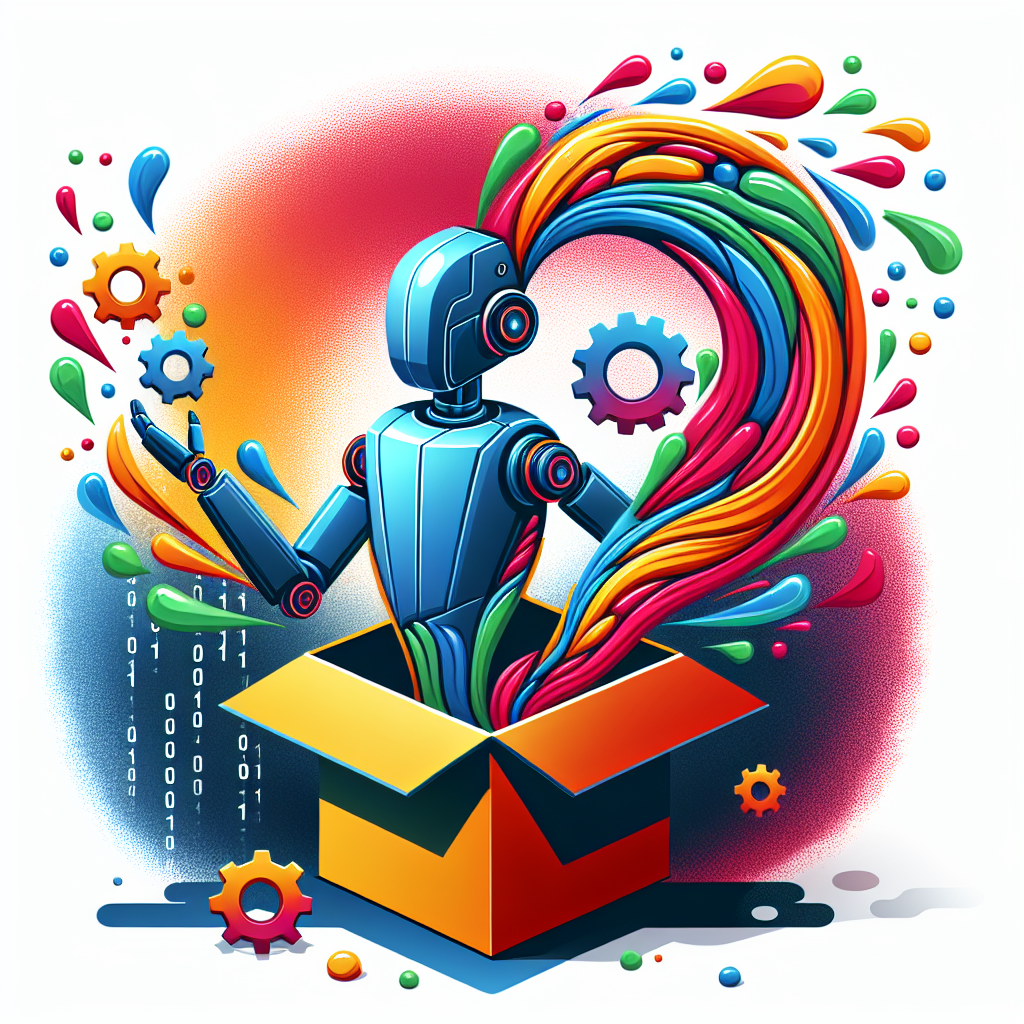In today’s rapidly evolving technological landscape, artificial intelligence (AI) is playing an increasingly significant role in pushing the boundaries of creativity. While AI was initially developed to perform tasks that typically require human intelligence, such as speech recognition, visual perception, and decision-making, its capabilities have expanded far beyond these basic functions. AI is now being used to generate unique and innovative ideas, create original content, and even collaborate with humans in creative endeavors. This shift highlights the potential for AI to not only assist in creative processes but also to challenge our traditional notions of creativity and inspire new ways of thinking.
One of the most exciting aspects of AI’s impact on creativity is its ability to think beyond the box. By analyzing vast amounts of data and identifying patterns and trends, AI can generate novel ideas and solutions that may not have been considered by human creators. This process, known as generative design, involves using algorithms to explore a wide range of possibilities and come up with innovative concepts that can then be refined and developed by human designers. This approach has been particularly valuable in fields such as architecture, where AI can help architects and designers generate new and unique building designs that push the boundaries of traditional architecture.
Another way in which AI is pushing the boundaries of creativity is through its ability to create original content. AI-powered tools are now capable of generating text, images, music, and even entire works of art that rival those created by human artists. For example, AI algorithms can analyze a vast database of existing music and create new compositions that mimic the style of a particular artist or genre. Similarly, AI can generate realistic images and videos based on a set of parameters provided by the user, allowing for the rapid creation of visual content for a variety of applications.
AI is also being used to collaborate with human creators in innovative ways. For example, some artists and designers are using AI as a tool to augment their creative processes, allowing them to explore new ideas and techniques that they may not have considered on their own. Additionally, AI-powered systems can analyze and interpret data from human creators, providing valuable insights and feedback that can inform the creative process. This collaborative approach has the potential to revolutionize the way we think about creativity, blurring the lines between human and machine-generated content and opening up new possibilities for artistic expression.
While AI’s impact on creativity is undeniably exciting, it also raises important questions and challenges. For example, some critics argue that the use of AI in creative processes may diminish the role of human creators and devalue the authenticity and originality of their work. Others raise concerns about the ethical implications of using AI to generate content, particularly in cases where the technology is used to manipulate or deceive audiences. These issues highlight the need for careful consideration and ethical oversight as AI continues to push the boundaries of creativity.
Despite these challenges, the potential benefits of AI in creative processes are vast. By leveraging the power of AI to think beyond the box, creators can explore new ideas, experiment with unconventional approaches, and push the boundaries of traditional creative disciplines. As AI technologies continue to evolve and improve, we can expect to see even greater innovations in the realm of creativity, challenging our preconceived notions of what it means to be creative and inspiring new ways of thinking and creating.
FAQs:
Q: How is AI being used in creative industries?
A: AI is being used in creative industries in a variety of ways, including generative design, content creation, and collaborative processes. For example, AI algorithms can generate new ideas and solutions in fields such as architecture and design, while AI-powered tools can create original content such as music, images, and text. Additionally, AI can be used to collaborate with human creators, providing valuable insights and feedback that can inform the creative process.
Q: What are some examples of AI-powered creative tools?
A: Some examples of AI-powered creative tools include Adobe Sensei, which uses AI to automate repetitive tasks and enhance creative workflows, and Google’s DeepDream, which generates psychedelic images based on neural networks. Other examples include AI-generated music compositions, artwork, and even entire books written by AI algorithms.
Q: What are the potential benefits of using AI in creative processes?
A: The potential benefits of using AI in creative processes include the ability to generate new and innovative ideas, automate repetitive tasks, and collaborate with AI systems to explore new creative possibilities. AI can also help creators overcome creative blocks, experiment with unconventional approaches, and push the boundaries of traditional creative disciplines.
Q: What are some of the challenges and ethical concerns associated with using AI in creative processes?
A: Some of the challenges and ethical concerns associated with using AI in creative processes include the potential for AI to diminish the role of human creators, devalue the authenticity and originality of their work, and manipulate or deceive audiences. There is also concern about the impact of AI on jobs in creative industries and the need for ethical oversight to ensure that AI is used responsibly and ethically in the creative process.

